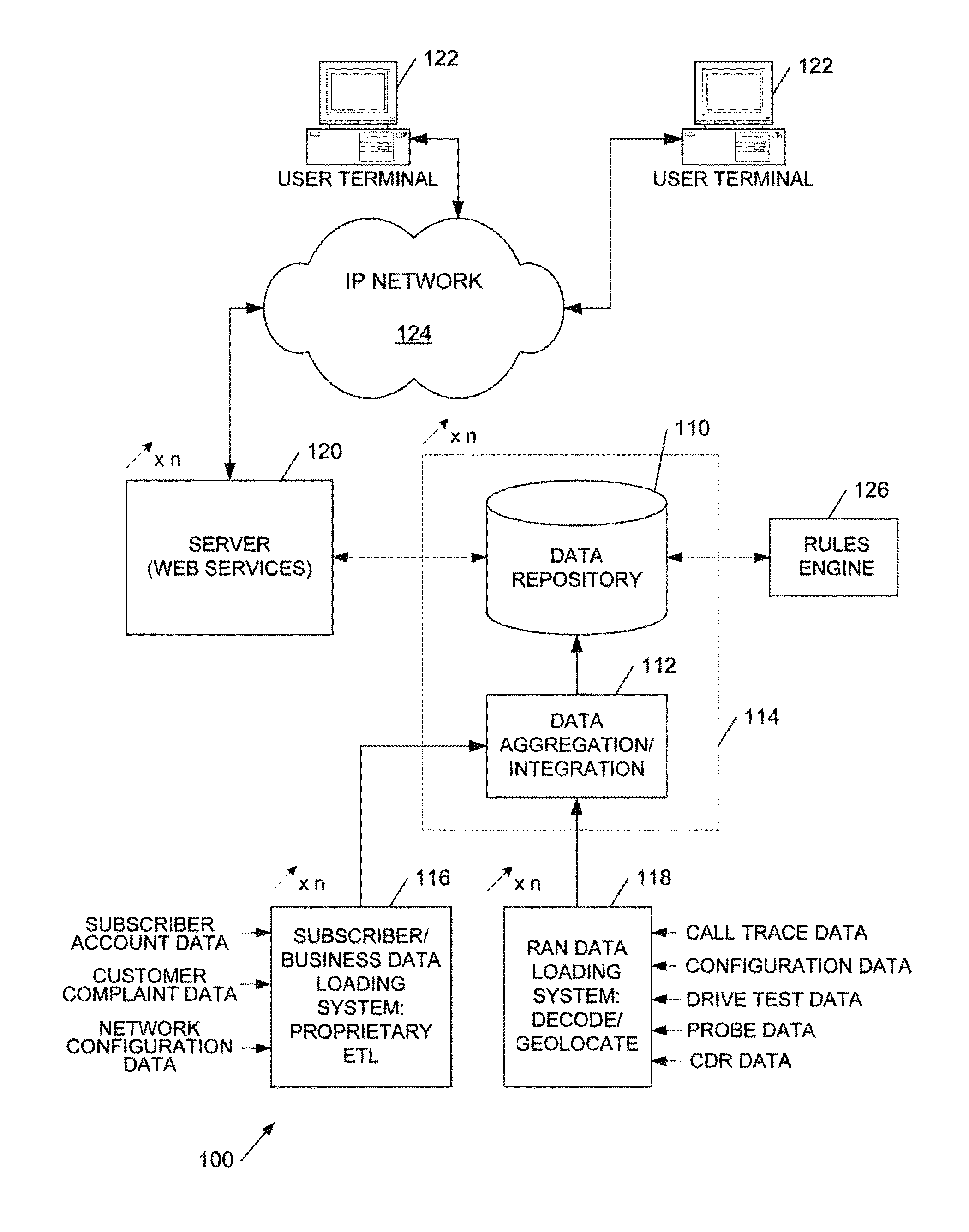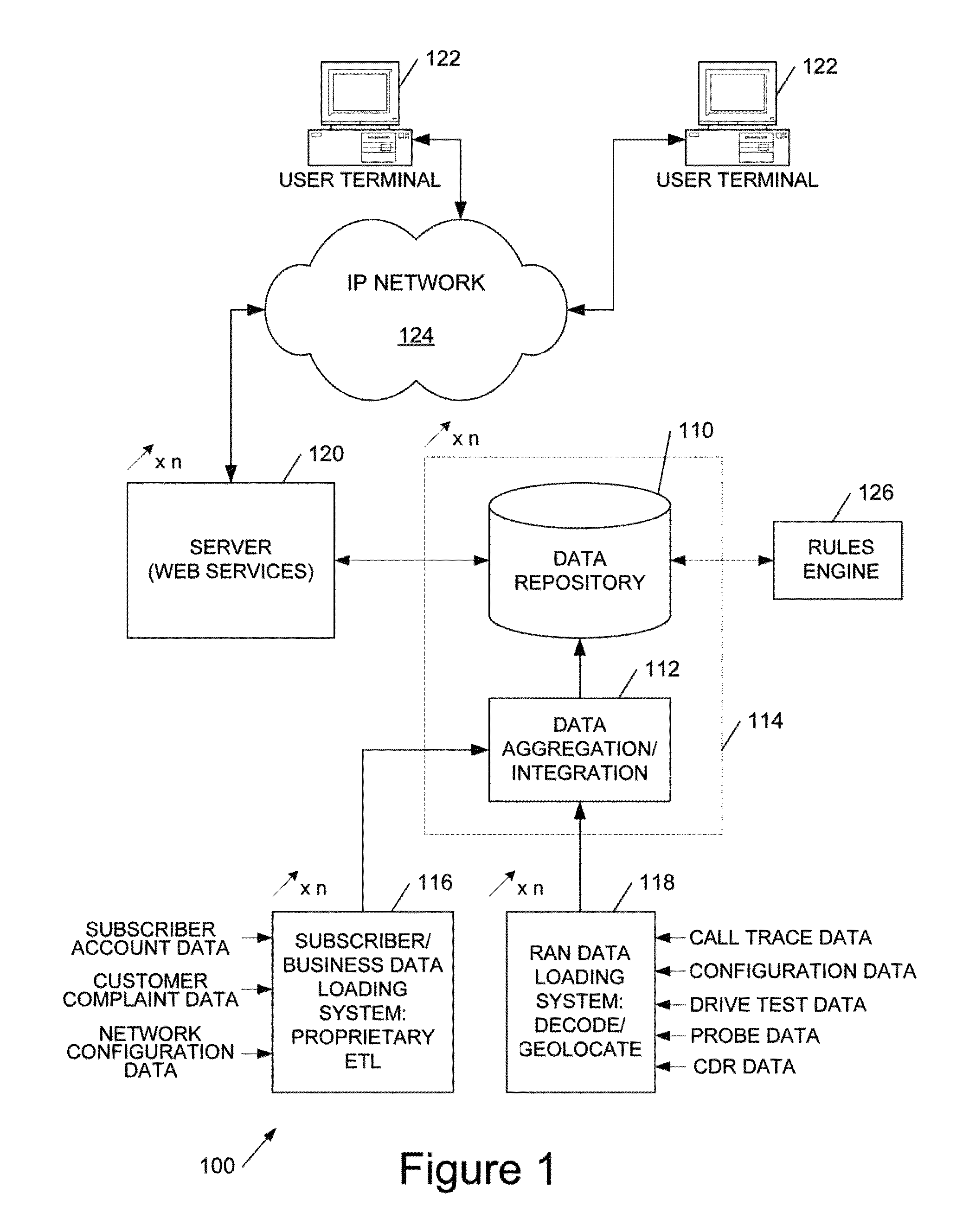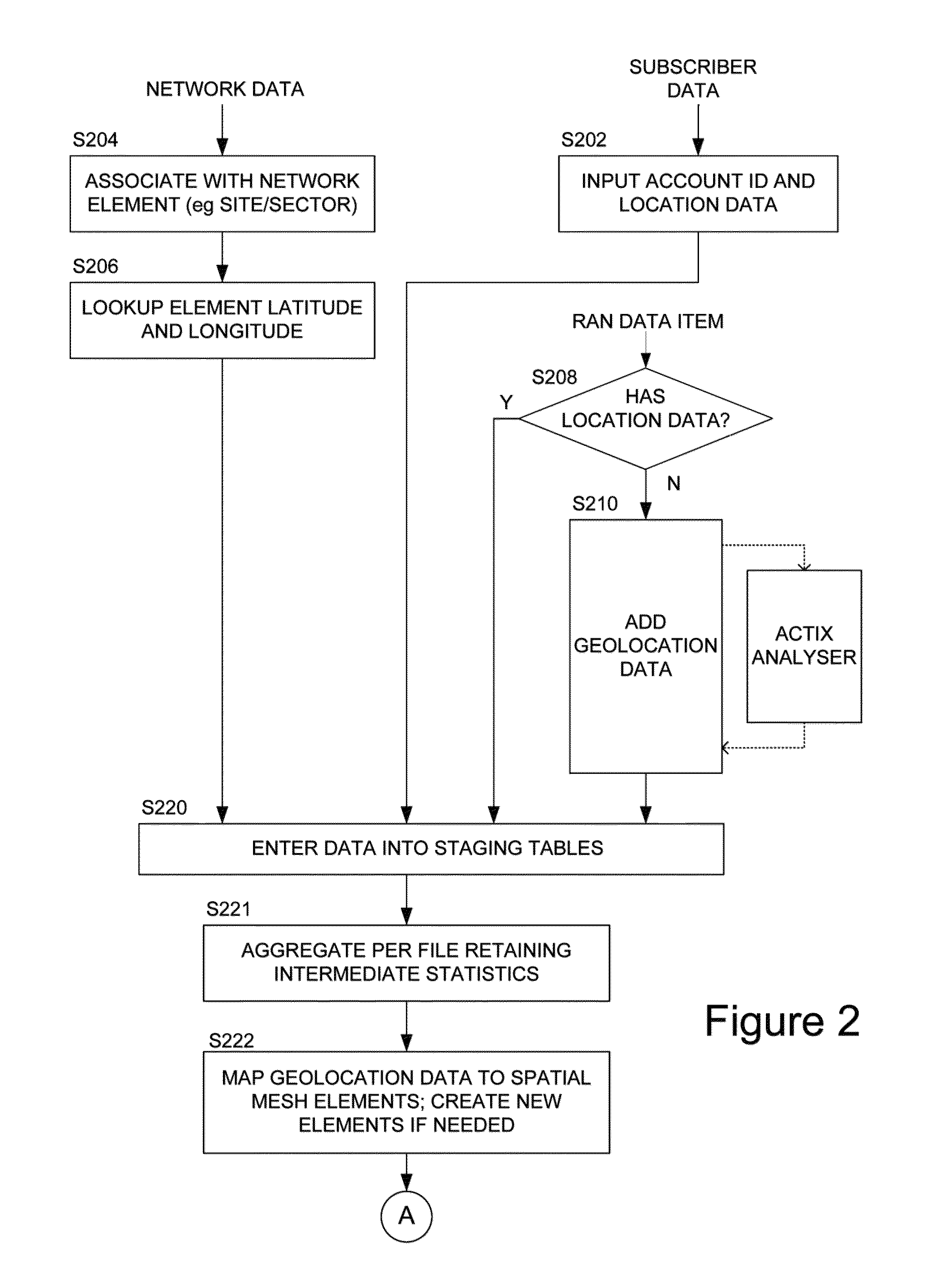Mobile phone network management systems
a mobile phone network and management system technology, applied in network planning, network data management, electrical equipment, etc., can solve problems such as difficulty in troubleshooting networks, insufficient technical data for solving real-world problems, and increase in the number and complexity of different devices connecting to a mobile network, so as to facilitate rapid access to spatial data, improve the coverage of said ran, and improve the effect of spatial data
- Summary
- Abstract
- Description
- Claims
- Application Information
AI Technical Summary
Benefits of technology
Problems solved by technology
Method used
Image
Examples
Embodiment Construction
[0046]Broadly speaking the systems and methods we will describe employ a spatial database defining a spatial grid to aggregate geolocated subscriber data, for example specifying a latitude / longitude location of a subscriber with radio access network (RAN) performance data from a wide range of sources. In general the geolocation is not precise and thus many, potentially millions, of points are aggregated into grid squares and, in embodiments, smoothed over neighbouring squares. The data is also dimensioned by time and by mobile device / device type, and a pivot-table type approach enables aggregation by selected dimensions of the data, as well as drill-down into the underlying data, avoiding rounding errors by storing sums and counts. The grid information is visualisable to facilitate user identification of priority areas for optimisation, but the data may be employed for automatically scheduling radioengineering tasks, either for service engineers or for direct implementation by a mob...
PUM
 Login to View More
Login to View More Abstract
Description
Claims
Application Information
 Login to View More
Login to View More - R&D
- Intellectual Property
- Life Sciences
- Materials
- Tech Scout
- Unparalleled Data Quality
- Higher Quality Content
- 60% Fewer Hallucinations
Browse by: Latest US Patents, China's latest patents, Technical Efficacy Thesaurus, Application Domain, Technology Topic, Popular Technical Reports.
© 2025 PatSnap. All rights reserved.Legal|Privacy policy|Modern Slavery Act Transparency Statement|Sitemap|About US| Contact US: help@patsnap.com



